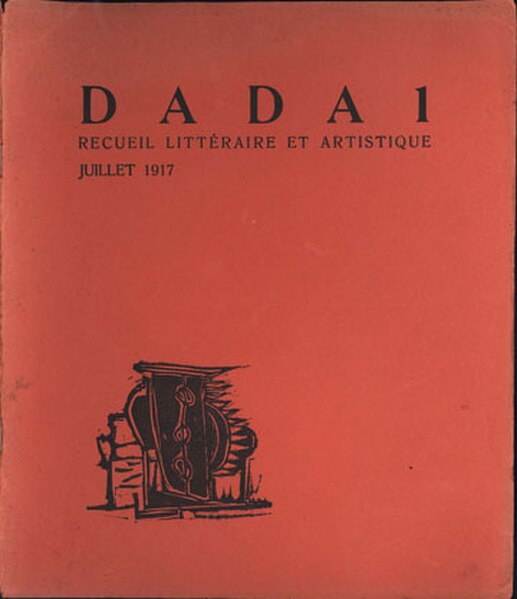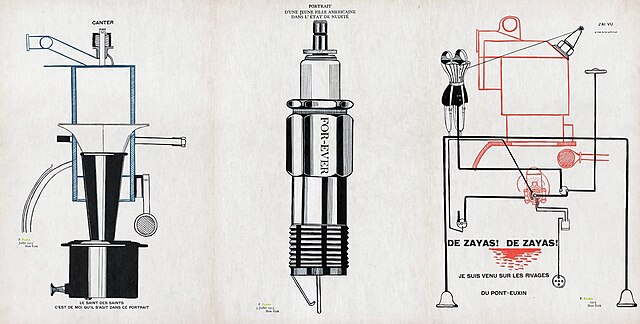Suzanne Duchamp-Crotti was a French Dadaist painter, collagist, sculptor, and draughtsman. Her work was significant to the development of Paris Dada and modernism and her drawings and collages explore fascinating gender dynamics. Due to the fact that she was a woman in the male prominent Dada movement, she was rarely considered an artist in her own right. She constantly lived in the shadows of her famous older brothers, who were also artists, or she was referred to as "the wife of." Her work in painting turns out to be significantly influential to the landscape of Dada in Paris and to the interests of women in Dada. She took a large role as an avant-garde artist, working through a career that spanned five decades, during a turbulent time of great societal change. She used her work to express certain subject matter such as personal concerns about modern society, her role as a modern woman artist, and the effects of the First World War. Her work often weaves painting, collage, and language together in complex ways.

Portrait of Suzanne Duchamp, by Man Ray, c. 1926, Paris
Broken and Restored Multiplication, 1918
Dada or Dadaism was an art movement of the European avant-garde in the early 20th century, with early centres in Zürich, Switzerland, at the Cabaret Voltaire, founded by Hugo Ball with his companion Emmy Hennings, and in Berlin in 1917. New York Dada began c. 1915, and after 1920 Dada flourished in Paris. Dadaist activities lasted until the mid 1920s.
Grand opening of the first Dada exhibition: International Dada Fair, Berlin, 5 June 1920. The central figure hanging from the ceiling is an effigy of a German officer with a pig's head. From left to right: Raoul Hausmann, Hannah Höch (sitting), Otto Burchard, Johannes Baader, Wieland Herzfelde, Margarete Herzfelde, Dr. Oz (Otto Schmalhausen), George Grosz and John Heartfield.
Cover of the first edition of the publication Dada, Tristan Tzara; Zürich, 1917
Francis Picabia: left, Le saint des saints c'est de moi qu'il s'agit dans ce portrait, 1 July 1915; center, Portrait d'une jeune fille americaine dans l'état de nudité, 5 July 1915; right, J'ai vu et c'est de toi qu'il s'agit, De Zayas! De Zayas! Je suis venu sur les rivages du Pont-Euxin, New York, 1915
Francis Picabia, Dame! Illustration for the cover of the periodical Dadaphone, n. 7, Paris, March 1920






